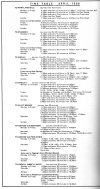I've just been looking again at some old OS maps (1895 & 1909) of the Burnley area, and of course I can see the tram system running along some roads. I was surprised to read that not long after the railway from Padiham to Burnley was opened to passengers (1876) that a tram system was installed in the area including a route from Burnley to Padiham (opened in 1881).
The railway went via Rose Grove to Burnley, the tram route went directly to Burnley.
Originally, the trams were steam hauled and the track was single with passing loops and was standard railway gauge.
The tram system was purchased by Burnley corporation who re-laid the network to a gauge of 4 feet and made the system double track with electric overhead wires in 1901. from then on until 1935 (on closure) the trams were electric driven.
The tram system reach all the way from Padiham to Nelson.
What effect did the tram systems have on the railways? It looked serious by 1903, have a read of this about Bott Lane Halt from the disused stations site.
Was it cheaper to travel on them as opposed to the trains?
How frequent were the trams?
The steam hauled ones could travel between 4 and 8 MPH, presumably the later electric ones went quicker?
Thanks,
Andy.
The railway went via Rose Grove to Burnley, the tram route went directly to Burnley.
Originally, the trams were steam hauled and the track was single with passing loops and was standard railway gauge.
The tram system was purchased by Burnley corporation who re-laid the network to a gauge of 4 feet and made the system double track with electric overhead wires in 1901. from then on until 1935 (on closure) the trams were electric driven.
The tram system reach all the way from Padiham to Nelson.
What effect did the tram systems have on the railways? It looked serious by 1903, have a read of this about Bott Lane Halt from the disused stations site.
Was it cheaper to travel on them as opposed to the trains?
How frequent were the trams?
The steam hauled ones could travel between 4 and 8 MPH, presumably the later electric ones went quicker?
Thanks,
Andy.

